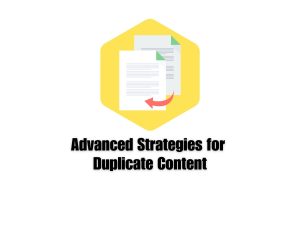
Case Studies: Successful Usage of Video Scripts
In the digital age, video content has become an integral part of online communication strategies for businesses and organizations across various industries. While videos are
In today’s interconnected world, producing authentic, plagiarism-free content has become a cornerstone of credible information dissemination. While anti-plagiarism tools and techniques are crucial in achieving this, fact-checking is an equally crucial yet often ignored tool in this fight. This article aims to shed light on the importance of Fact-Checking in Ensuring Plagiarism-Free Content.
While plagiarism and fact misrepresentation are distinct issues, they both undermine the authenticity and credibility of content. Plagiarism involves using someone else’s work without proper credit, leading to copyright infringement. On the other hand, fact misrepresentation involves stating inaccurate or misleading information as facts, leading to misinformation.
Fact-checking aids in combating plagiarism by ensuring that all presented ideas, thoughts, and information are not only true but also credited correctly. It aids in acknowledging the sources of information, reinforcing the credibility of the content, and respecting intellectual property rights.
Here are some of the reasons why fact-checking is integral in ensuring plagiarism-free content:
1. Verifying Accuracy: Fact-checking confirms the accuracy of the content, ensuring a reliable representation of facts. This helps in producing authoritative, trustworthy, and, consequently, plagiarism-free content.
2. Acknowledging Sources: Fact-checking helps in attributing rightful credit to sources. Through this process, we can ensure any borrowed ideas or facts are properly attributed, mitigating potential plagiarism.
3. Establishing Credibility: Fact-checked content boosts the author’s credibility and enhances the audience’s trust. It projects the author’s commitment to creating original, high-quality content.
4. Preventing Misinformation: Fact-checking helps keep misinformation at bay. As false facts often spread through copied content with inadequate verification, diligent fact-checking can reduce the risk of contributing to this spread.
Here’s how you can incorporate fact-checking into your content creation process:
1. Source Verification: Before utilizing information from a source, verify its credibility. It’s typically safe to rely on reputable publications, government websites, research institutions, and industry experts.
2. Cross-Referencing: Validate the provided information by cross-referencing across multiple reliable sources.
3. Citation: Whenever you use facts or figures from another source, make sure they’re appropriately credited. Correct citation practices respect intellectual property and fend off plagiarism.
4. Use Supporting Evidence: Evidence lends credence to the facts mentioned in the content. This could include graphs, images, charts, or links to supporting documents.
5. Use Fact-Checking Tools: Reliable fact-checking tools and websites can validate the authenticity of a piece of information. Websites like FactCheck.org, PolitiFact, and Snopes among others, specialize in fact verification.
6. Appoint a Fact-Checker: If resources allow, hiring a dedicated fact-checker can greatly enhance the credibility and plagiarism-free nature of the content. Fact-checkers bring an extra level of scrutiny, ensuring the accuracy and originality of the content.
Fact-checking plays a significant role in maintaining the sanctity of content, keeping it free from plagiarism and misrepresentation of facts. While it might add an extra step to the creation process, the outcome of high-quality, plagiarism-free, and reliable content makes it a worthwhile investment. By binding fact-checking and anti-plagiarism practices together, content creators can uphold a high standard of credibility, authenticity, and respect for original work in their content.

In the digital age, video content has become an integral part of online communication strategies for businesses and organizations across various industries. While videos are

Duplicate content refers to identical or similar content that appears on multiple URLs within a website or across different websites. While duplicate content is common





“LeadsView did an excellent job with my project and will definitely recommend. Easy to work with, flexible and good quality of work. I am more than happy to recommend them."




















Copyright 2023 © LeadsView. All Rights Reserved
